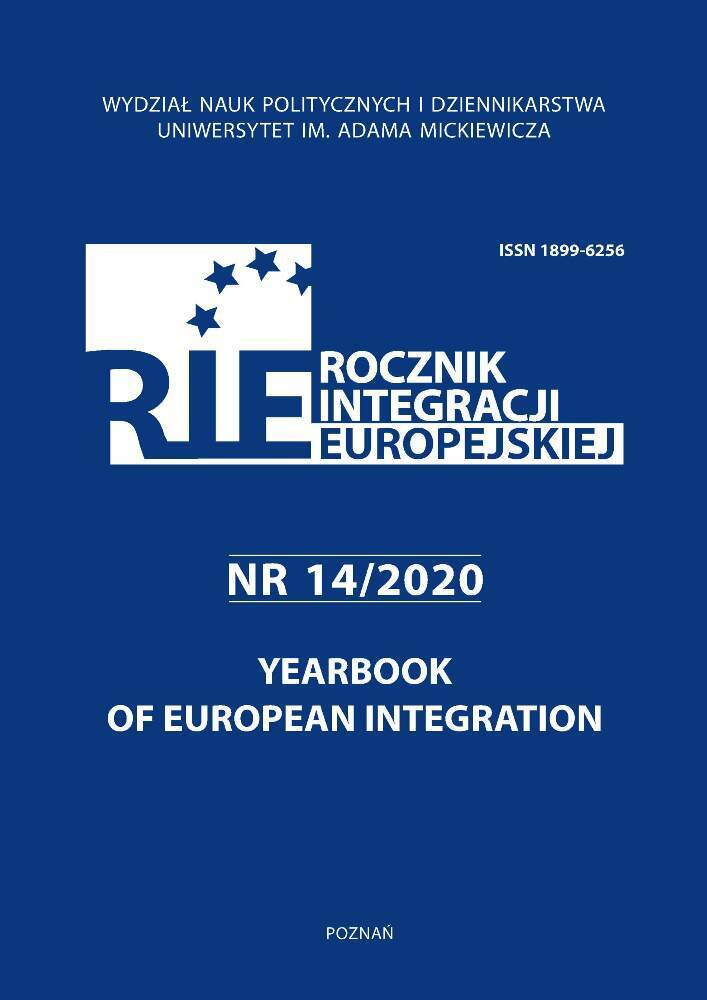Abstrakt
Od 2015 roku naczelne miejsce w dyskusjach toczonych na arenie międzynarodowej zajmują kwestie migracyjne. Rozważane są zarówno przez pryzmat praw człowieka, jak i interesów poszczególnych państw. Te ostatnie zdominowały dyskusje, prowadząc do swoistej ofensywy skierowanej przeciw możliwości przyjmowania obywateli państw trzecich. Restrykcyjne rozwiązania prawne wprowadzane do prawa krajowego, sprzeciw wobec międzynarodowych inicjatyw prawnych, podkreślających konieczność solidarnego działania na rzecz pomocy i ochrony osób migrujących oraz likwidacji przyczyn masowych przemieszczeń ludności, skutkują przyjmowaniem przez poszczególne państwa polityki zerowej imigracji. Celem niniejszego artykułu jest ocena polityki imigracyjnej Republiki Chińskiej na Tajwanie, która dostrzegając niedobory siły roboczej i brak możliwości ich uzupełnienia przy pomocy migracji wewnętrznej, przemodelowała w znaczący sposób podejście do imigracji. Odpowiedź na pytanie o zasadność i skuteczność proponowanych rozwiązań prawnych posłużyć ma do wskazania rozwiązań możliwych do zastosowania przez państwa członkowskie Unii Europejskiej, dyskutujące nad reformą wspólnych polityk: imigracyjnej i azylowej. Rozważania prowadzone będą przy wykorzystaniu metod charakterystycznych dla nauk społecznych, w szczególności nauk prawnych i nauk o polityce. Kluczowe znaczenie przypisano metodzie analizy prawnej i analizy systemowej, zastosowano również metodę porównawczą.
Finansowanie
Artykuł przedstawia wyniki badania sfinansowanego w ramach kontraktu pomiędzy Uniwersytetem im. Adama Mickiewicza w Poznaniu a Departamentem Stosunków Międzynarodowych Ministerstwa Edukacji Tajwanu (kontrakt nr 9/2017 / dnipk / uam).
Bibliografia
Act for the Recruitment and Employment of Foreign Professionals (2017), 22.11.2017, Presidential Order No. 10600140481, the Executive Yuan Order No. 1070002554.
Buzan Barry (1991), New Patterns of Global Security in the Twenty-First Century, “International Affairs”, vol. 67, no. 3.
Employment Service Act (1992), 5.05.1992, Presidential Order No. 2359, as amended.
Fell Dafydd (2014), Migration through the lens of political advertising: how Taiwanese parties discuss migration, in: Migration to and from Taiwan, eds. Ch. Kuei-fen, D. Fell, L. Ping, London–New York.
Ferreted Foreign Illegal Residents (2019), National Immigration Agency, MOI, https://www.moi.gov.tw/files/site_stuff/321/1/month/month_en.html#6%20Immigration%20Adm 10.05.2019.
Ferry Timothy (2015), Rethinking Taiwan’s Immigration Policy, “Taiwan Business Topics”, 16.04.2015, https://topics.amcham.com.tw/2015/04/rethinking-taiwans-immigration-policy/, 17.05.2019.
Ferry Timothy (2018), Taiwan Competes for Talent and Manpower, “Taiwan Business Topics”, 18.04.2018, https://topics.amcham.com.tw/2018/04/taiwan-competes-for-talent-and-manpower/, 17.05.2019.
Foreign population in Taiwan hits record high (2012), “Taiwan Today”, 6.02.2012, https://taiwantoday.tw/news.php?unit=10&post=19076, 10.05.2019.
Foreign Residents (2019), National Immigration Agency, MOI, https://www.moi.gov.tw/files/site_stuff/321/1/month/month_en.html#6%20Immigration%20Adm, 10.05.2019.
Global Talent 2021. How the new geography of talent will transform human resource strategies (2012), Oxford Economics, Oxford.
Hoang Lan Anh (2017), Governmentality in Asian Migration Regimes: the Case of Labour Migration from Vietnam to Taiwan, “Population, Space and Place”, vol. 23, DOI: 10.1002/psp.2019.
Hsia Hsiao-Chuan (2008), The Development of Immigrant Movement in Taiwan: the Case of Alliance of Human Rights Legislation for Immigrants and Migrants, “Development and Society”, vol. 37, no. 2.
Hsiao Ting-Fang (2017), ‘Farewell, Taiwan’. Taiwan’s growing Talent Drain, “CommonWealth Magazine”, vol. 628.
Huang Wen-Chih Billy (2018), Immigrant crime in Taiwan: perspectives from Eastern Asia, “Forensic Research & Criminology International Journal”, vol. 6, Issue 3.
Human Trafficking Prevention Act (2009), 23.01.2009, Presidential Decree No. 09800019281, the Executive Yuan Order No. 0980029315C, as amended.
Immigration Act (1999), 21.05.1999, Presidential Decree No. 8800119740, the Executive Yuan Order No. 20932, as amended.
Kitamura Yumi (2018), Introduction to the Special Issue – Re-positioning China’s and Taiwan’s Migration in Southeast Asia, “Issues and Studies: A Social Science Quarterly on China, Taiwan, and East Asian Affairs”, vol. 54, no. 1.
Kuei-fen Chiu, Fell Dafydd, Ping Lin (2014), Migration to and from Taiwan: identities, politics and belonging, in: Migration to and from Taiwan, eds. Ch. Kuei-fen, D. Fell, L. Ping, London–New York.
Laliberté Andre (2017), Responses to Abuse Against Migrant Domestic Workers: A Multi-scalar Comparison of Taiwan, Hong Kong, and Shanghai, in: Gender, Migration, and the Work of Care: A Multi-Scalar Approach to the Pacific Rim, eds. S. Michel, I. Peng, Cham.
Lan Pei-Chia (2006), Global Cinderellas: Migrant Domestics and Newly Rich Employers in Taiwan, Durham–London.
Li William D. H. (2011), Developmental State, Human Rights and Migrant Workers, “Development and Society”, vol. 40, no. 1.
Lin Ji-Ping (2018), The Migration of Labor between Taiwan and Southeast Asia: Changing Policies, The National Bureau of Asian Research NBR, January.
Lin Ji-Ping (2012), Tradition and Progress: Taiwan’s Evolving Migration Reality, Migration Policy Institute, 24.01.2012.
Liu Dorothy S. (1996), The 1992 Employment Service Act and the Influx of foreign workers in Taiwan and Translation of the 1994 Implementary Provisions, “Pacific Rim Law & Policy Journal”, vol. 5, no. 3.
MyungHee Kim (2016), Lessons from Taiwan’s Revised Immigration Law for Marriage Migrants, “International Information Institute”, vol. 19, no. 4.
Overstayed Foreign Nationals with Tourist Visas (2019), National Immigration Agency, MOI, https://www.moi.gov.tw/files/site_stuff/321/1/month/month_en.html#6%20Immigration%20Adm, 10.05.2019.
Potyrała Anna (2019), Kryzys migracyjny 2015+ Między solidarnością a partykularyzmem, Poznań.
Rich Timothy S. (2019), How Taiwanese Think About Immigration, “The Diplomat”, 16.01.2019, https://thediplomat.com/2019/01/how-taiwanese-think-about-immigration/, 14.05.2019.
Selya Roger Mark (1992), Illegal Migration in Taiwan: A Preliminary Overview, “The International Migration Review”, vol. 26, no. 3.
Song Jiyoung (2015), Redefining Human Security for Vulnerable Migrants in East Asia, “Journal of Human Security”, vol. 11, Issue 1.
Trafficking in persons report. June 2019 (2019), United States Department of State, Washington.
Tseng Yen fen, Wang Hong-zen (2011), Governing Migrant Workers at a Distance: Managing the Temporary Status of Guestworkers in Taiwan, “International Migration”, vol. 51, Issue 4.
Wang Chieh-Hsuan, Chung Chien-Ping, Hwang Jen-Te, Ning Chia-yang (2018), The Foreign Domestic Workers in Singapore, Hang Kong, and Taiwan: Should Minimum Wage Apply to Foreign Domestic Workers?, “The Chinese Economy”, vol. 51, Issue 2, DOI: 10.1080/10971475.2018.1447831.
Wang Hong-zen (2011), Immigration Trends and Policy Changes in Taiwan, “Asian and Pacific Migration Journal”, vol. 20, no. 2.
World Population Prospects 2019 (2019), United Nations. Population Division. Department of Economic and Social Affairs, New York.

